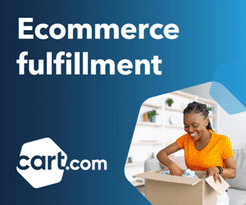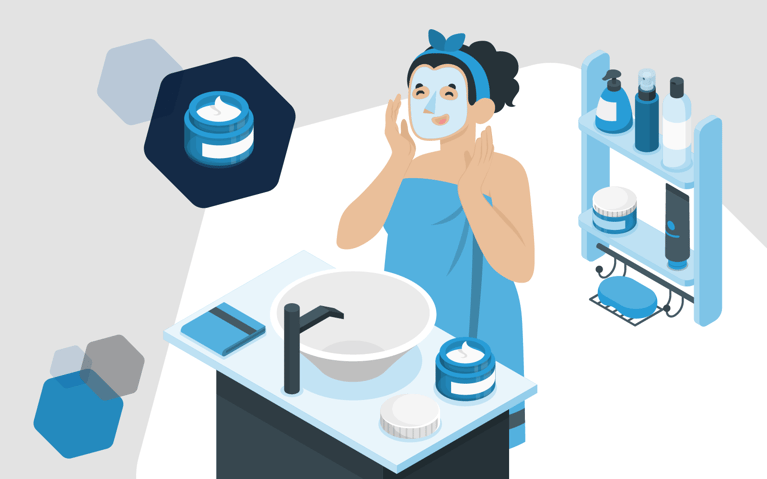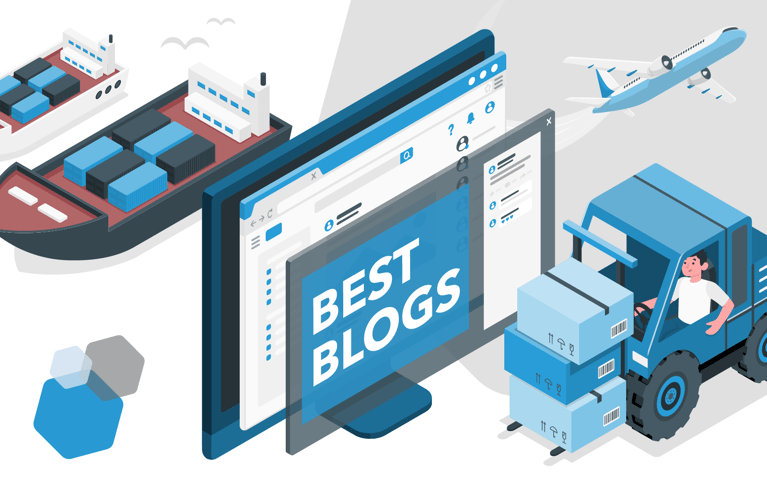The beauty market is huge–and growing. According to Statista, the global beauty and personal care industry will be worth an estimated $736.79 billion by 2028, and more and more brands are fighting to get a slice of this pie.
But as competition in beauty ecommerce heats up, brands are finding themselves under pressure to offer more innovative, memorable experiences that give them an edge within a super saturated market. It’s no longer enough just to create a dupe of a popular product, or offer x2 loyalty points on a purchase; consumers are weary of these tactics, and it doesn’t excite them the way it did 4-5 years ago.
So, what should beauty bands be looking to invest if they’re serious about attracting customers and building retention in 2024? Let’s dive in:
1. Beauty subscription services
Subscription boxes cater to beauty consumers’ desire for convenience and discovery. They save valuable time when it comes to comparing and selecting new products, while also offering an enticing post-purchase experience. So, it’s hardly surprising that the beauty subscription market is forecast to grow to $10.2 billion by 2033, driven by a growing number of players in the ecommerce marketplace.
Sephora Play, Ipsy and Boxycharm are just some of the best-known subscription boxes that attract a loyal base of subscribers. However, executing subscription boxes successfully is not an easy task. Inventory management, kitting and custom packaging are essential value-added services to deliver memorable brand experiences that bring customers back for multiple subscription cycles. Think attractive inserts, brand packaging, freebies and other elements of brand storytelling that give subscribers something exciting to anticipate on their doorstep.
Working with a beauty fulfillment expert is crucial to providing beauty subscription services and an outstanding customer experience. 3PLs or other beauty fulfillment service providers have specialized knowledge of the unique requirements and intricacies of beauty fulfillment, including delicate product handling, temperature-sensitive items and strict packaging regulations. Their expertise ensures that beauty products are stored, handled and shipped with the utmost care and attention to detail, preserving product integrity and customer satisfaction. By leveraging their industry-specific insights and best practices, beauty fulfillment experts optimize operations, streamline processes and enhance the overall post-purchase experience.
2. Personalization
Just like the rest of ecommerce, beauty consumers want to feel as though a brand is catering to their exact needs and desires – not millions of others. This can be even more concentrated in the beauty space, as product purchasing decisions and habits (and how they make you feel) are very personal. This means the offers and recommendations that customers are presented with during the shopping experience play in a big role in determining whether they feel comfortable to make a purchase.
For example, if a shopper is browsing for foundation and concealer for darker skin tones, presenting them with pop-up recommendations for products being demoed on lighter skin is unlikely to secure a sale. In fact, this lack of sensitivity may alienate that consumer and push them away from your brand.
Fortunately, widespread data collection and analytics has made it more accessible for brands to offer personalized product recommendations and serve up more relevant content to shoppers. Sephora, for example, has pioneered fully customized beauty offers, free samples and promotions based on recent purchases and browsing activity, increasing the likelihood of future sales.
3. Loyalty programs
Beauty has long been home to some of the most innovative loyalty programs in ecommerce. Many beauty brands seeing high levels of brand loyalty, as favored products need periodic replenishment or refills. This gives beauty consumers a powerful incentive to subscribe to loyalty programs en masse and reap the rewards.
Large beauty retailers like Sephora and Ulta Beauty were some of the earliest pioneers of loyalty programs, offering shoppers everything from free samples to discounts and early access to major sales. Ulta owes a massive 95% of its sales to consumers who are subscribed to their Ultamate Rewards loyalty program, which currently boasts over 40 million members.
However, more independent beauty brands are fighting to get out of the long shadow cast by beauty retailer programs. Given that these retailers allow shoppers to buy multiple brands under one roof, it’s easy to assume that this would be a tough sell to customers. The key to success? Targeting rewards and incentives that are not just financial in nature. For example, Charlotte Tilbury has built a hugely successful loyalty program by offering members’ only experiences to shoppers, including masterclasses, personalized recommendations, gifts with purchase and even the ability to ‘bring back’ previous best sellers.
Loyalty programs enhance the customer experience by rewarding repeat purchases and engagement, fostering a sense of appreciation and exclusivity among loyal customers. By offering incentives such as discounts, exclusive offers and personalized rewards, loyalty programs encourage customer retention and deepen brand affinity, ultimately leading to increased satisfaction and loyalty.
4. Augmented reality
Buying a beauty product without testing it first is always a gamble, even when purchasing from a brand you know well. This challenge has led many brands to embrace AR technology in a bid to create more realistic try-on experiences, using facial filters to simulate makeup products such as foundation, lipstick, blush. This enables consumers to make more informed purchasing decisions and understand how different products will appear on different skin tones and face shapes, without needing to go in-store to try them in person.
However, AR has a growing number of applications in ecommerce besides being used to sell products. For example, augmented reality provides a more engaging way for beauty brands to host product tutorials, using filters as a way to help consumers learn different techniques for applying products. These types of initiatives are a great way to build brand awareness and future demand while also providing value to existing customers.
5. Sustainable packaging initiatives
Packaging waste is a serious problem across ecommerce but is a particular concern within the beauty industry. Because of the need to maintain product safety and integrity, beauty packaging has lagged behind other product categories when it comes to implementing more sustainable and zero-waste packaging designs.
However, young consumers in particular are growing more conscious of the impact that their consumption habits are having on the environment–and beauty is no exception. Brands are facing more collective pressure to invest in more strategic initiatives to reduce the impact of beauty packaging, and retailers are rising to the challenge.
Ulta Beauty has recently expanded its ‘Beauty Drop-Off’ service to allow more consumers to dispose of emptied beauty packaging within Ulta Stores to be processed by Pact Collective using upcycling, molecular recycling and waste-to-energy conversion. By investing better education and sustainability initiatives, beauty brands can better meet consumer demand for more eco-friendly beauty and fulfillment practices.
6. Grounding ‘clean beauty’ claims
Buzzwords like ‘clean’, ‘green’ and ‘sustainable’ have followed beauty products around for years, leading to confusion amongst consumers as to what these labels actually mean (Spoiler: not a whole lot). In many cases, labeling products in a way is a blatant example of greenwashing, since there is a lack of regulation over the use of these terms.
However, consumers are becoming more discerning over these claims, with a massive 79% of shoppers reporting they are skeptical about beauty brands’ sustainability records. As beauty shoppers make more effort to educate themselves on different ingredients and formulations, brands are increasingly turning to third-party certifications to reassure consumers that their claims about a product hold up. Seals of approval such as The Vegan Trademark and The Leaping Bunny (cruelty free) are growing in popularity, and their presence is likely to become a bigger deal for beauty shoppers in the years to come.
7. Omnichannel fulfillment
Omnichannel fulfillment benefits beauty brands by offering customers seamless shopping experiences across various channels, including online platforms, brick-and-mortar stores and mobile apps, catering to diverse consumer preferences. By integrating inventory management and order fulfillment systems, beauty brands can optimize inventory visibility, reduce out-of-stock situations and enhance customer satisfaction through timely and convenient product delivery options. Omnichannel fulfillment also supports a robust fulfillment strategy, meaning if brands are selling both B2B and D2C, the right fulfillment provider will support all operations, providing a full visibility through a centralized view.
Experienced beauty fulfillment provides support the unboxing experience as well, carefully packaging products with branded materials and inserts, ensuring items arrive safely and in pristine condition. Additionally, they may offer customization options such as personalized notes or gift wrapping, enhancing the overall presentation and delighting customers upon opening their packages. Brands that take care when selecting fulfillment services are better able to provide an exceptional customer experience.
Elevating your beauty brand with the right trends
As a discretionary category that plays on emotion, desire, and self-improvement to secure sales, beauty is often at the forefront of technology adoption and innovative sale strategies within ecommerce. To attract and retain customers, beauty brands can’t just think about specific points in the purchasing journey; it requires taking a holistic view of the end-to-end shopping journey and fulfillment process to find places where improvements and innovations can be made.
From the ritual of opening a subscription box to personalized recommendations and loyalty programs that deliver value-added touchpoints to the customer experience, there are numerous ways that today’s beauty retailers are redefining what it means to shop online. Contact our team today to learn how Cart.com can support your beauty fulfillment and ecommerce operations.

-1.webp?width=400)


.png?width=1940&height=180&name=better%20software%20(1).png)



